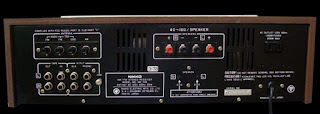Manual Belt-drive Turntable for vinyl enthusiasts
Main Features
Manual Belt-drive Turntable supporting 33/45/78rpm
High Density MDF cabinet
USB output for transferring music from vinyl records to your Mac or PC.
Built-in Phono Equalizer(LINE/PHONO switchable)
Static balanced straight type tone arm
High-performance MM type phonograph cartridge attached
TEAC’s TN-100 brings the classic sound of vinyl to a price anyone can afford. Designed for music enthusiasts, the belt-drive motor ensures a cleaner sound than direct-drive DJ players. The output is switchable between phono out, for use with a preamp, and line out with phono EQ for use with powered monitors or receivers. An additional USB output allows vinyl collections to be recorded to Mac or PC computers.
Unlike many budget turntables, the TN-100 has a wooden body to dampen vibrations and provide cleaner, richer sound. The three-speed, auto-return turntable is available in either a flat black or cherry finish.
For music fans who have been collecting records for decades or those just starting out, TEAC’s TN-100 delivers the true sound of classic records.
Authentic belt-drive turntable
The plastic platter is driven by a high torque DC motor for stable rotation. A durable Neoprene® rubber mat further reduces vibration. The high accuracy of the spindle is maintained by a polished Stainless steel Spindle and highly durable bronze spindle holder.
Static balanced straight type tone arm
A straight tone arm has been used for high tracking accuracy. The anti-skating mechanism ensures accurate tracking of phonograph records.
3-speed Turntable with Auto-return
The TN-100 can play both LP and EP records. The Manual arm lifter ensures seamless analog playback.
Dense, composite wood construction with modern black and cherry color finish
Unlike competitors with plastic chassis, the heavy MDF cabinet minimizes vibrations and resonance for cleaner playback of your vinyl collection. An understated flat black finish fits any décor.
MM type cartridge phono equalizer amplifier
Enjoy vinyl playback with any amplifier. The TN-300 supports both phono and line output that allows you to play vinyl with or without phono equalizer.
Built-in USB digital Output
The TI-made A/D converter allows you to transfer music via USB to your PC and digitize your vinyl collection. Protect your vinyl records from damage caused by playback, and enjoy your music library on mobile devices. A pair of RCA connectors is employed for conventional way of connections with either Line or Phono input of your amplifier.
Specifications
Turntable
Drive System: Belt-drive
Motor: DC motor
Speeds: 33-1/3 and 45 rpm
Speed variation: ±2%
Wow and Flutter: 0,25 %
Signal-to-Noise Ratio: 64 dB or higher ( A-weigthed, 20 kHz)
Turntable Platter: Plastic
Diameter: 290 mm (11-1/2")
Tone Arm
Type: Static-balanced straight-pipe tonearm
Effective Arm length: 200 mm
Cartridge
Type: MM
Output Voltage: 2,4 mV ±3 dB
Output Voltage
Phono EQ Thru : 2,5 mV ±3 dB
Phono EQ On : 149 mV (16,5 dBV)
Output Jacks : RCA
USB Port (USB port that can receive power from computer USB buses; Full Speed)
USB Connector : Type B
USB Bus Power Support: 5 V, 500 mA
General
AC Adapter Power
Input : AC 100 - 240 V 50/60 Hz
Output: 12 V 500 mA
Power Consumption:
Standby: 0,5 W or less
On (Start): 1,5 W or less
Dimensions (W x H x D): 420 x 356 x 105 mm (16-5/8" x 14-1/8" x 4-1/2")
Weight: 4,5 kg (9-7/8 lbs)


























